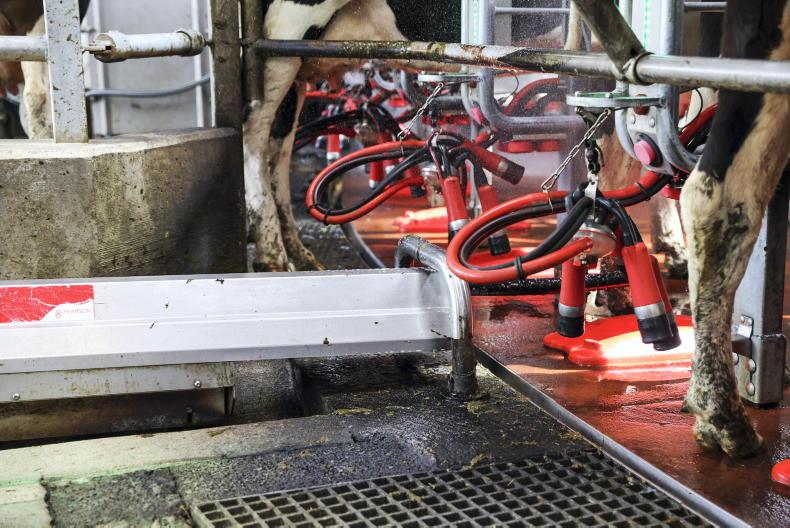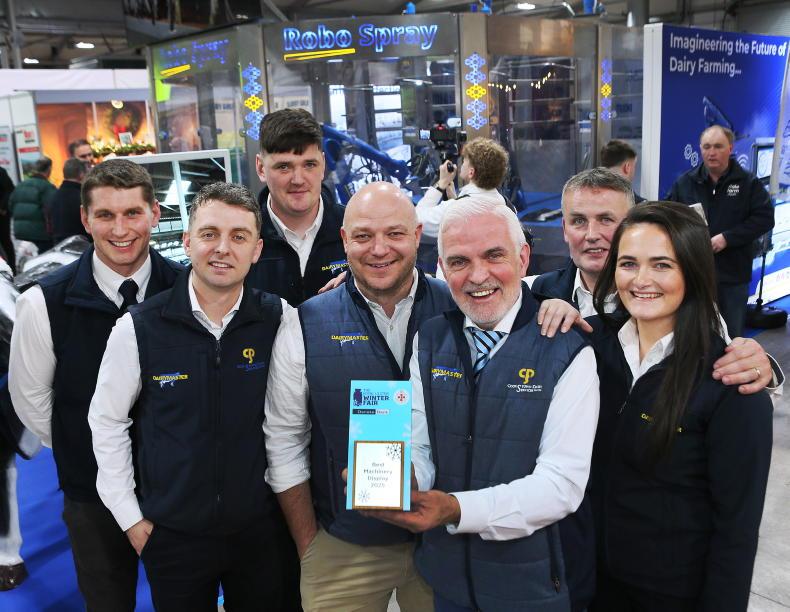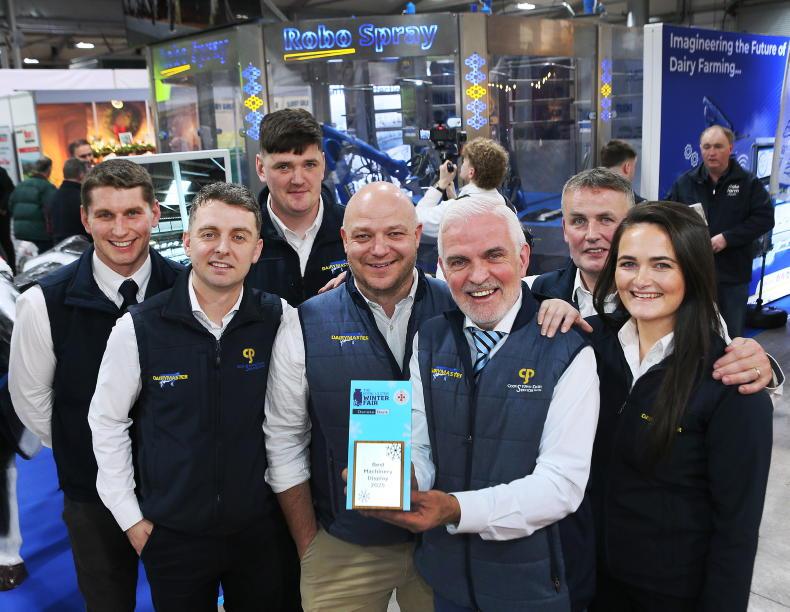More butter and powder sales drove turnover and improved profits in the second-largest milk processor on the Island of Ireland.
Lakeland Dairies, headquartered in Cavan with key milk factories in Bailieborough and Artigarvan, saw operating margins improve, profit margins increase, and debt reduce as the benefits of consolidation with LacPatrick Dairies seem to be kicking in already.
Lakeland Dairies Co-op is now the second-largest co-op in Ireland. It has 3,200 suppliers with the milk pool split between 55% in Northern Ireland and 45% in the Republic.
On 1 April 2019, the merger with LacPatrick officially started. This significantly increased the Lakeland presence in Northern Ireland and brought more processing plants to handle a growing milk pool. Total milk supplies were up 3% last year to reach 1.9bn litres. The all-important EBITDA (earnings before interest, tax, depreciation and amortisation) rose by €7.6m to €50.5m. That’s a 17% increase over 2019.
Lakeland business, food service, crashed down 24% from €239m sales in 2019 to €181m in 2020
The key driver of this was more butter and powder sales, which lifted from €584m in 2019 to €691m in 2020, that’s an 18% increase. At the same time, the other significant arm in the Lakeland business, food service, crashed down 24% from €239m sales in 2019 to €181m in 2020. COVID-19 shut down the hospitality and airline sector.
What happened is the milk that would have gone to the food service sector got diverted into powder and butter instead. In 2020, Lakeland made over 250,000t of powders and butter.
The Lakeland play in the food service sector is with products like milk sticks, UHT milk, creams etc.
Sales in this food service sector will improve as more restaurants, hotels and airplanes open up. The branded food arm sales (which includes liquid milk) of the Lakeland business increased marginally (€145m to €140m), so while supermarket sales were buoyant, it didn’t change the dial in terms of total sales.
The final arm of the Lakeland business is agribusiness. In 2020, they sold over 220,000t of feed (up 4.7%) and 27,000t of fertiliser. Total sales are up from €72m in 2019 to €75m in 2020.
Future capacity
In 1995, Lakeland started buying milk in Northern Ireland and now it collects over 1bn litres of milk there. The Lakeland milk pool is growing – up 3% like for like (5% in ROI and 1.7% in NI). Approximately two-thirds of the milk suppliers to Lakeland are shareholders.
The milk supply profile in Northern Ireland and indeed on the border is different to that in the south and southeast. From a manufacturing point of view, the flatter milk supply pattern helps smooth a narrow peak. Having said that, processing capacity on the Island is always tight for that eight-week period given the various arrangements between processors.
Lakeland CEO Michael Hanley said: “There is no room for a plant breakdown, we use butter making at Banbridge on a seasonal basis, cranking it up from the end of March and running it for the peak months.”
We have reasonable capacity at peak as it stands
Is Hanley worried he might have to cap supply at peak? “We have our 24-page survey out with suppliers to gauge appetite and we should have results in maybe six to eight weeks. We have reasonable capacity at peak as it stands. We have never refused milk and don’t see that changing. We have over €210m invested in processing over the last six years and will continue on that journey.”
Is business debt a concern? The numbers look good on this and while there is about €20m more debt on the accounts compared to pre-merger times, that would look like a good investment given where the industry is in terms of capacity.
Debt levels are down to €89m in 2020 from €111m in 2019 (1.77 times earnings). The only notable transaction helping this is terms of asset sales were shares sold in IPL at €7m registering a €1m gain.
We have spent capex money on all sites in 2020, with up to €12m in Artigarvan to unleash the processing capacity from previous investment
Where is the next move on consolidation? Hanley said: “Look, we laid out our plans on the yoghurt business and the Monaghan plant very early on in the process. We want the business to be as efficient as possible. We have spent capex money on all sites in 2020, with up to €12m in Artigarvan to unleash the processing capacity from previous investment. Higher milk price is the goal and that’s what we are driving for.”
Comment: Positive outlook for Lakeland
The future looks better for Lakeland. Concerns were very real for four years leading up to Brexit that it could have been very damaging. It worked out OK given the protocol and seamless movement of goods across the border. The detail on the mixed product and the market downturn measures from the EU still need to be nailed down.
It’s difficult to compare this business to similar-scaled businesses Glanbia and Dairygold like for like.
The key difference is the milk supply pattern – the 4:1 Lakeland curve versus the 10:1 Southern curve mean a real money difference.
Lakeland haven’t had to invest hugely in greenfield steel so debt levels are lower. That means less cost, less risk and lower running costs.
A flatter profile makes manufacturing more profitable as plant utilisation is better by about 8% to 10%, industry analysts suggest.
That’s not to say flatter is better, because ultimately the farmer measures milk price, farm profitability and a sustainable business. The grass model that’s instrincally linked to a peak milk curve has been shown to be better for the farmer and depending on what numbers and research you look at is potentially better for the environment.
The Lakeland set of numbers look good. They look to have made a good job of selling butter and powders. They have a journey to go on sending a better signal to all Lakeland farmers on milk pricing so both management and farmers can be more efficient.
This ultimately would give Lakeland more powder and butter to sell with lower costs and ultimately that makes better sense for farmers and for Lakeland.
There is a tendency to think the Lakeland model is very different to other Irish manufacturers. However, when you break it down, it’s old reliables like butter and powder sales that make this business tick. Good investments, strong governance and good management make it happen.
Read more
Job of the Week: procurement manager at Lakeland Dairies
NI Milk League: Glanbia Ireland top with 30p/l base
Young gun takes over at Lakeland
More butter and powder sales drove turnover and improved profits in the second-largest milk processor on the Island of Ireland.
Lakeland Dairies, headquartered in Cavan with key milk factories in Bailieborough and Artigarvan, saw operating margins improve, profit margins increase, and debt reduce as the benefits of consolidation with LacPatrick Dairies seem to be kicking in already.
Lakeland Dairies Co-op is now the second-largest co-op in Ireland. It has 3,200 suppliers with the milk pool split between 55% in Northern Ireland and 45% in the Republic.
On 1 April 2019, the merger with LacPatrick officially started. This significantly increased the Lakeland presence in Northern Ireland and brought more processing plants to handle a growing milk pool. Total milk supplies were up 3% last year to reach 1.9bn litres. The all-important EBITDA (earnings before interest, tax, depreciation and amortisation) rose by €7.6m to €50.5m. That’s a 17% increase over 2019.
Lakeland business, food service, crashed down 24% from €239m sales in 2019 to €181m in 2020
The key driver of this was more butter and powder sales, which lifted from €584m in 2019 to €691m in 2020, that’s an 18% increase. At the same time, the other significant arm in the Lakeland business, food service, crashed down 24% from €239m sales in 2019 to €181m in 2020. COVID-19 shut down the hospitality and airline sector.
What happened is the milk that would have gone to the food service sector got diverted into powder and butter instead. In 2020, Lakeland made over 250,000t of powders and butter.
The Lakeland play in the food service sector is with products like milk sticks, UHT milk, creams etc.
Sales in this food service sector will improve as more restaurants, hotels and airplanes open up. The branded food arm sales (which includes liquid milk) of the Lakeland business increased marginally (€145m to €140m), so while supermarket sales were buoyant, it didn’t change the dial in terms of total sales.
The final arm of the Lakeland business is agribusiness. In 2020, they sold over 220,000t of feed (up 4.7%) and 27,000t of fertiliser. Total sales are up from €72m in 2019 to €75m in 2020.
Future capacity
In 1995, Lakeland started buying milk in Northern Ireland and now it collects over 1bn litres of milk there. The Lakeland milk pool is growing – up 3% like for like (5% in ROI and 1.7% in NI). Approximately two-thirds of the milk suppliers to Lakeland are shareholders.
The milk supply profile in Northern Ireland and indeed on the border is different to that in the south and southeast. From a manufacturing point of view, the flatter milk supply pattern helps smooth a narrow peak. Having said that, processing capacity on the Island is always tight for that eight-week period given the various arrangements between processors.
Lakeland CEO Michael Hanley said: “There is no room for a plant breakdown, we use butter making at Banbridge on a seasonal basis, cranking it up from the end of March and running it for the peak months.”
We have reasonable capacity at peak as it stands
Is Hanley worried he might have to cap supply at peak? “We have our 24-page survey out with suppliers to gauge appetite and we should have results in maybe six to eight weeks. We have reasonable capacity at peak as it stands. We have never refused milk and don’t see that changing. We have over €210m invested in processing over the last six years and will continue on that journey.”
Is business debt a concern? The numbers look good on this and while there is about €20m more debt on the accounts compared to pre-merger times, that would look like a good investment given where the industry is in terms of capacity.
Debt levels are down to €89m in 2020 from €111m in 2019 (1.77 times earnings). The only notable transaction helping this is terms of asset sales were shares sold in IPL at €7m registering a €1m gain.
We have spent capex money on all sites in 2020, with up to €12m in Artigarvan to unleash the processing capacity from previous investment
Where is the next move on consolidation? Hanley said: “Look, we laid out our plans on the yoghurt business and the Monaghan plant very early on in the process. We want the business to be as efficient as possible. We have spent capex money on all sites in 2020, with up to €12m in Artigarvan to unleash the processing capacity from previous investment. Higher milk price is the goal and that’s what we are driving for.”
Comment: Positive outlook for Lakeland
The future looks better for Lakeland. Concerns were very real for four years leading up to Brexit that it could have been very damaging. It worked out OK given the protocol and seamless movement of goods across the border. The detail on the mixed product and the market downturn measures from the EU still need to be nailed down.
It’s difficult to compare this business to similar-scaled businesses Glanbia and Dairygold like for like.
The key difference is the milk supply pattern – the 4:1 Lakeland curve versus the 10:1 Southern curve mean a real money difference.
Lakeland haven’t had to invest hugely in greenfield steel so debt levels are lower. That means less cost, less risk and lower running costs.
A flatter profile makes manufacturing more profitable as plant utilisation is better by about 8% to 10%, industry analysts suggest.
That’s not to say flatter is better, because ultimately the farmer measures milk price, farm profitability and a sustainable business. The grass model that’s instrincally linked to a peak milk curve has been shown to be better for the farmer and depending on what numbers and research you look at is potentially better for the environment.
The Lakeland set of numbers look good. They look to have made a good job of selling butter and powders. They have a journey to go on sending a better signal to all Lakeland farmers on milk pricing so both management and farmers can be more efficient.
This ultimately would give Lakeland more powder and butter to sell with lower costs and ultimately that makes better sense for farmers and for Lakeland.
There is a tendency to think the Lakeland model is very different to other Irish manufacturers. However, when you break it down, it’s old reliables like butter and powder sales that make this business tick. Good investments, strong governance and good management make it happen.
Read more
Job of the Week: procurement manager at Lakeland Dairies
NI Milk League: Glanbia Ireland top with 30p/l base
Young gun takes over at Lakeland









SHARING OPTIONS